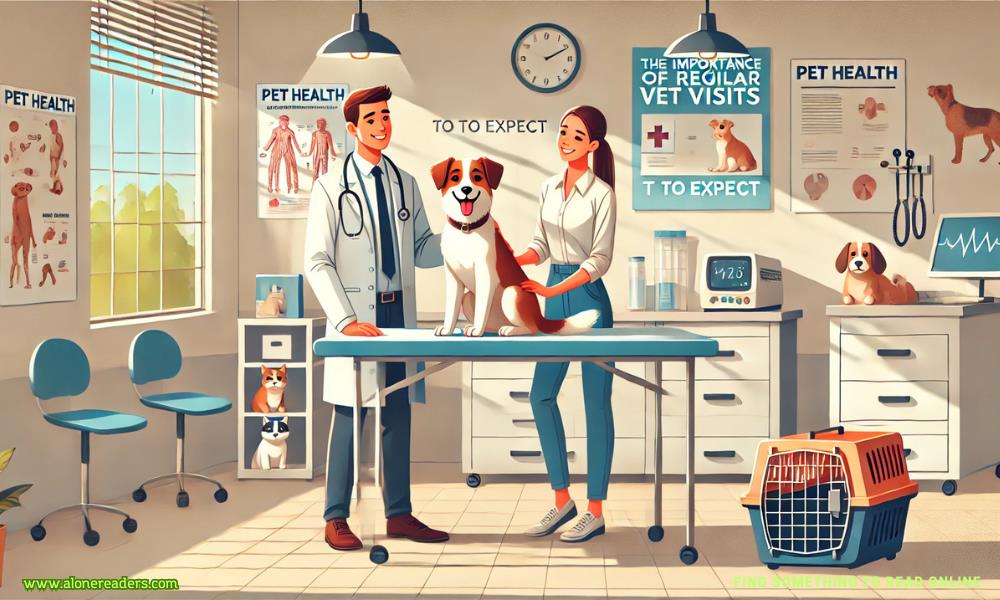
Pet ownership is not just about love and companionship—it’s also a long-term responsibility that includes proactive medical care. Among the most important but often underestimated parts of this responsibility is the commitment to regular veterinary visits. These visits go far beyond vaccinations and emergencies. They are vital checkpoints in your pet’s overall health, behavior, and lifespan management. Understanding what to expect from these visits, and why each component matters, can help you make the most of them and ensure your pet lives a healthy, comfortable life.
Early detection of illness
Most illnesses in pets, especially chronic conditions like kidney disease, diabetes, or arthritis, begin with subtle symptoms. Regular exams increase the chances of catching these early when treatment is more effective and less invasive. For example, a heart murmur found during a routine exam could be the first sign of progressive heart disease, which may be manageable with early intervention.
Tracking developmental milestones and aging changes
Whether it’s a puppy, kitten, adult, or senior pet, each life stage has distinct needs. Puppies and kittens require frequent visits to monitor growth, dental development, and immune system strength. Senior pets need screening for common age-related issues such as cognitive decline, joint deterioration, or internal organ failure. A vet can spot changes over time by comparing baseline data from previous visits.
Parasite prevention and control
Fleas, ticks, heartworms, and intestinal parasites may not always be visible to the naked eye but can significantly impact your pet’s health. During routine vet visits, fecal exams and bloodwork help detect parasite infestations early. Your vet will also recommend a tailored parasite control regimen based on your pet’s environment and lifestyle, such as whether they frequent parks, kennels, or water bodies.
Behavioral assessments and training referrals
Changes in behavior can be the first sign of a medical issue. A dog that becomes aggressive may be in pain. A cat that stops using the litter box might be dealing with urinary tract disease or stress. Vets can help distinguish medical causes from behavioral ones and recommend veterinary behaviorists or training specialists if needed.
Puppies and kittens (0–12 months)
In the first year, expect to visit the vet at least 3 to 4 times. These visits cover:
Adult dogs and cats (1–7 years)
Annual wellness exams are standard for healthy adult pets. These usually include:
Senior pets (7+ years)
Senior pets benefit from twice-yearly exams, as aging accelerates health changes. These visits often include:
Detailed medical history review
Your vet begins with a discussion about your pet’s eating habits, energy levels, behavior changes, and any symptoms you've noticed. This helps them form a clinical picture before the physical exam.
Physical examination
From head to tail, your vet checks:
Vital signs and body condition scoring
Vitals like temperature, heart rate, and respiratory rate are recorded. Your pet is also assessed for obesity or malnutrition using a body condition score (BCS) scale from 1 to 9.
Diagnostic tests
Depending on the pet's age, breed, or symptoms, your vet may recommend:
Vaccination updates and preventives
Your vet will review your pet’s vaccine history and administer any required or optional vaccines, such as bordetella for dogs or feline leukemia for cats. Preventives for heartworm, fleas, and ticks are also reviewed and prescribed.
Routine vet visits can range in cost depending on services included. In urban areas, a standard check-up without diagnostics may cost $70–$100. Bloodwork can add $80–$200, and vaccines may cost $20–$50 per dose.
Pet insurance plans often cover wellness visits as part of preventive care packages. However, many plans focus on illness and injury, so it’s essential to verify coverage details. Some pet owners opt for wellness plans offered by veterinary clinics, which bundle services at discounted rates over the year.
Breed-specific risk screening
Some breeds are genetically predisposed to specific conditions. Golden Retrievers are prone to cancer, Dachshunds to spinal issues, and Persian cats to kidney disease. Vets use breed-specific guidelines to recommend early screening or lifestyle adjustments.
Dental health strategy
Neglecting dental health can lead to systemic problems like heart and kidney disease. Vets perform oral exams, provide dental cleanings under anesthesia, and guide you on at-home care such as brushing, dental treats, or enzymatic rinses.
Nutrition and weight guidance
Obesity is one of the most common but under-addressed issues in pets. Vets help create customized feeding plans, suggest weight-loss diets, and track progress over time using digital scales and body composition tools.
Geriatric care planning
For aging pets, your vet may introduce joint supplements, pain medication, or cognitive support therapies. They’ll also discuss changes in exercise, home setup (ramps, orthopedic beds), and palliative care options for chronic conditions.
Before the appointment:
During the visit:
After the visit:
Conclusion: The Long-Term Impact of Routine Veterinary Care
Regular veterinary visits are the backbone of preventive pet health care. They enable early disease detection, keep vaccinations up to date, help manage chronic issues, and build a comprehensive health history for your pet. Skipping or delaying these visits may save time or money short-term, but it increases the risk of late-stage diagnoses that are more expensive and harder to treat. Whether you share your life with a bouncy Labrador, a shy rescue cat, or a senior rabbit, routine vet visits ensure they receive the attention and medical expertise needed to thrive at every stage of life.